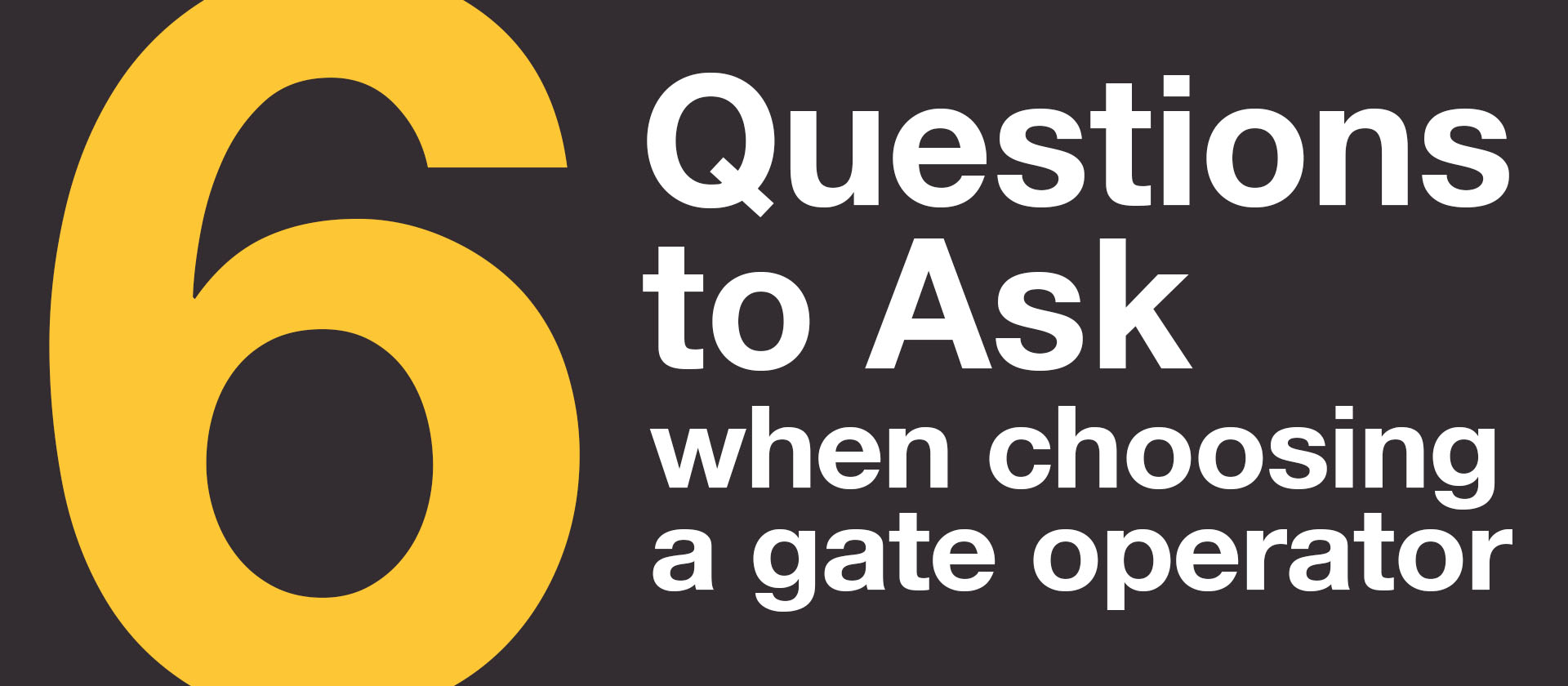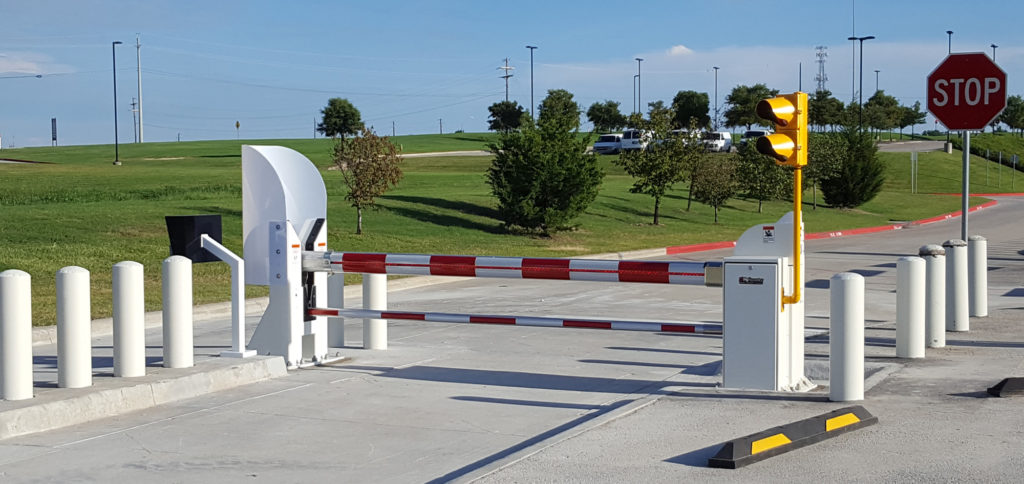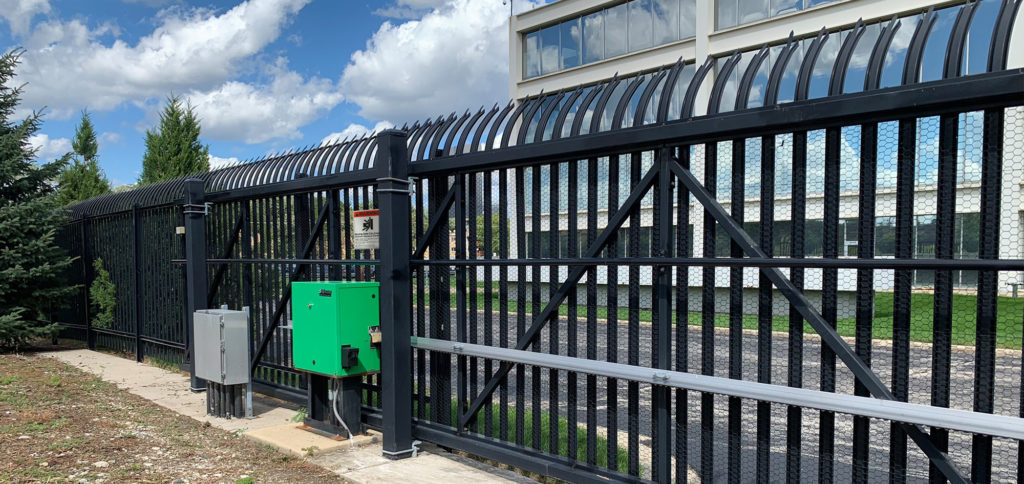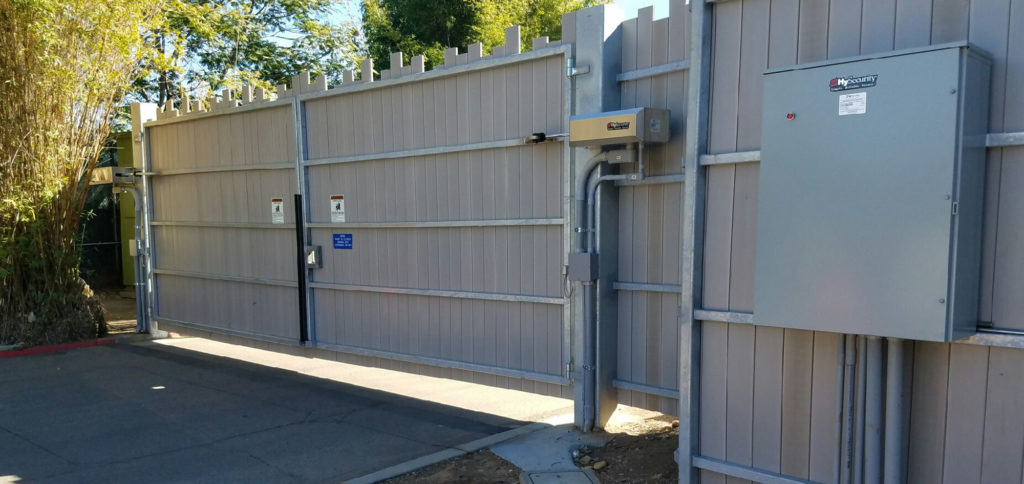
Six Questions to Ask When Choosing a Gate Operator
Your site security hinges strongly on your choice of gate operator. Choosing a gate operator that isn’t suited to your site’s security needs could cost you millions in property damage and may even cost people’s lives in the event of security breach.
To select the proper gate operator, one needs a clear understanding of the security level, site conditions, vehicle throughput, visual impact and safety standards that a site requires. These are questions to ask yourself when choosing an automated vehicular gate system for your site.
What are the different types of automated vehicular gate systems and which one should I use?
There are several types of gate operators, each serving a specific function, or purpose depending on site characteristics and security needs. There are five basic types of gates/gate operators:
- Slide gates. Often found in commercial and industrial sites, slide gates offer a high amount of security and a wide array of design options such as chain link, ornamental picket, ballistic firewall, or crash rated. Slide gates are often used in conjunction with a barrier arm for traffic control or with a crash-rated barrier, wherein the slide gate acts as an initial security layer and the barrier acts as the final security layer.
- Swing gates. Residential sites and HOAs are the most common use for swing gates. They’re easy to operate and can be designed ornately and attractively but are often susceptible to high winds. Swing gates need to be designed with up to 50% open space to allow air to pass through and mitigate the effects of wind loading.
- Vertical lift gates. These are a convenient alternative in areas where there isn’t room for slide or swing gates. It’s most often used as a rapid means to open/close several lanes of traffic at once and is most effective in places that experience heavy snow fall.
- Hostile Vehicle Mitigation (HVM) barriers. These gate operators are designed to protect a site against hostile vehicle threats. The category consists of wedge barriers, barrier arms, active bollards, and specific slide and swing gates configurations that are crash rated. These barriers can be set to cycle for every vehicle entering/exiting or only be deployed under threat conditions otherwise known as final denial barriers.
- Barrier arms. Often used in conjunction with a slide or swing gate, these are primarily used for traffic control, anti-tailgating and reducing vehicle strikes to the slide or swing gate. A barrier arm can also be crash rated and provide final denial against hostile vehicle threats (such as the StrongArm® M30/M50).
What safety standards should I consider?
Safety is of utmost concern when operating any type of gate. This ensures that personal injury and vehicle damage are avoided while opening or closing a gate system. UL 325 Standards determine which safety features need to be present in any given gate design and are classified into four usage classes depending on the type of site where the gate operator is being utilized.
- Class I covers all single family residential applications with up to four residences and has an operational speed limit of 1 ft/sec.
- Class II covers any multifamily residential or general use by the public applications in excess of four residences or areas for general use by the public and has an operational speed limit of 1 ft./sec.
- Class III is intended for industrial usage where limited access is expected. An example of this class would be a warehouse property entrance not intended to serve the general public.
- Class IV is restricted access only, which includes applications such as prison entrances, government buildings and high-security properties that must always be monitored by either a guard at the entrance or through a controlled surveillance system.
What is the security level of my site?
The security level of a site also influences the type of gate operator suitable for it. It often comes down to a choice between being a convenience open or a secured/hardened access point. Convenience open would be used primarily on residential sites or light commercial and industrial facilities, where visitors and employees often come and go. A slide or swing gate are most used for sites with this security level.
Sensitive sites such as airports, prisons, data centers, or federal government facilities would require a hardened access point achieved with a more secure gate operator that can protect against hostile vehicle threats. HVM barriers such as wedge barriers, active bollards, and barrier arms are the best choice for these sites.
How fast should my gate open and close?
The speed of opening/closing a gate is crucial to the overall security of a site. Take slide gates for example — they are dependent on the size of the clear opening, who or what is crossing the access point, and what volume of throughput they will likely see throughout the day. A wider clear opening will obviously take longer to open and close, leaving your site exposed during that extended time.
If the security level requires that the gate is cycled for every vehicle, and gaining access quickly is important, you may need to choose a faster operator to accommodate those requirements. HySecurity offers slide gate operators that travel as fast as 3 ft./sec. When making this decision, also make sure to consider the UL 325 maximum speed limit of slide gates for UL Class I and II.
What size and weight should my gate panel be?
Identifying the size and weight of the needed gate panel can narrow down the type of gate operator that will work for your site. For example, when selecting a HySecurity SlideDriver™ model, you’ll find weight capacities ranging from 1,500 to 20,000 lbs. For swing gates, wind load can also add weight to a gate and affect its overall performance. To mitigate any wind loading issues, consider a gate panel that provides at least 50% open space. HySecurity offers a unique solution to swing gates with a lot of wind loading via the HydraSwing™ operator.
How will my gate operator perform during a power outage?
The operation of any gate operator can be affected by a power outage. To ensure continuous gate operation even during a power outage, consider gate operator models that offer UPS battery backup. These backup power systems allow you to continuously operate your gate operator for 24 to 48 hours (typical for most installations) or until normal AC power is restored. HySecurity offers a range of gate operators with UPS battery backups in DC and AC inverter options.
Note: Automated vehicular access gates are not intended for pedestrian access. Pedestrians must be provided a separate access point.
Perimeter Security News is produced by the Specification Support Team.
Looking for a personalized gate operator recommendation or site design help? Let's connect.
Products mentioned in this article.
-
Ultimate stopping power.Barrier ArmCrash RatedHostile Vehicle Mitigation
-
Legendary security, power, and durability.IndustrialSlide Gate
-
Maximum muscle, supreme hydraulic linear actuator.IndustrialSwing Gate


